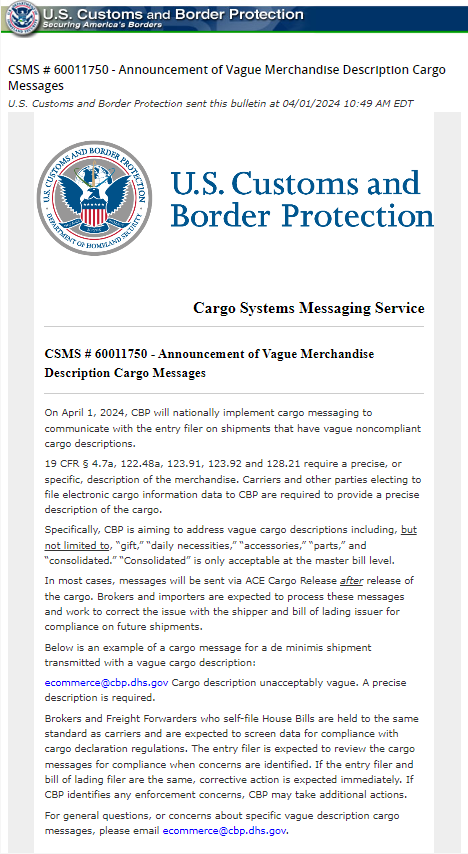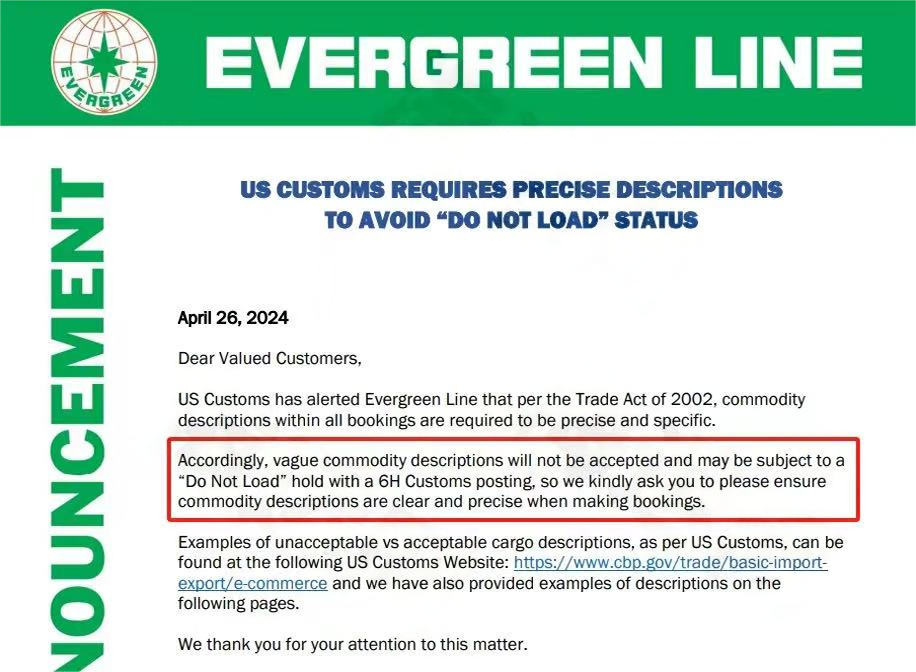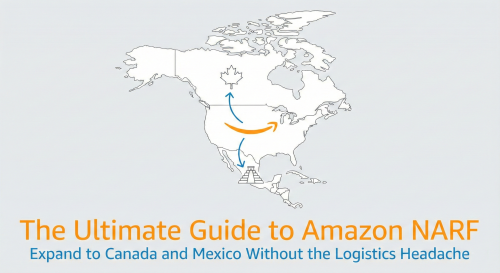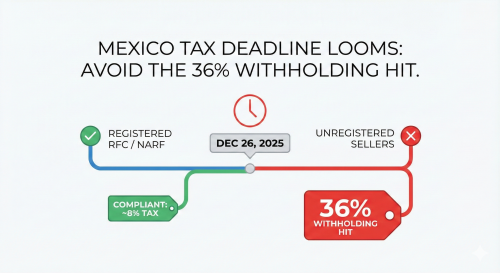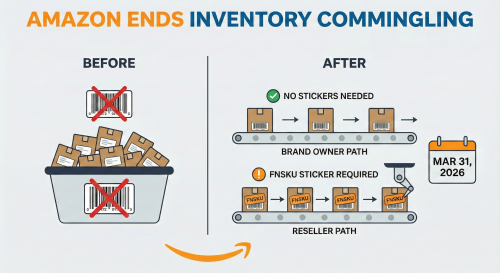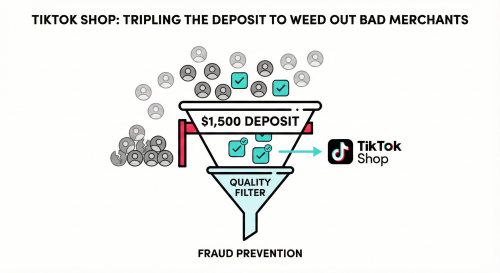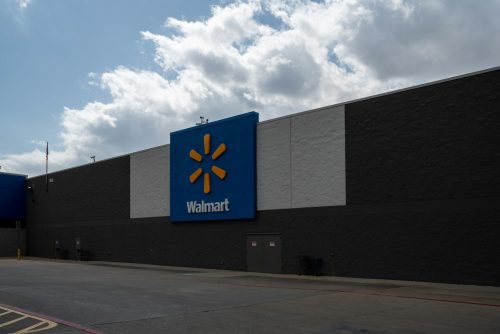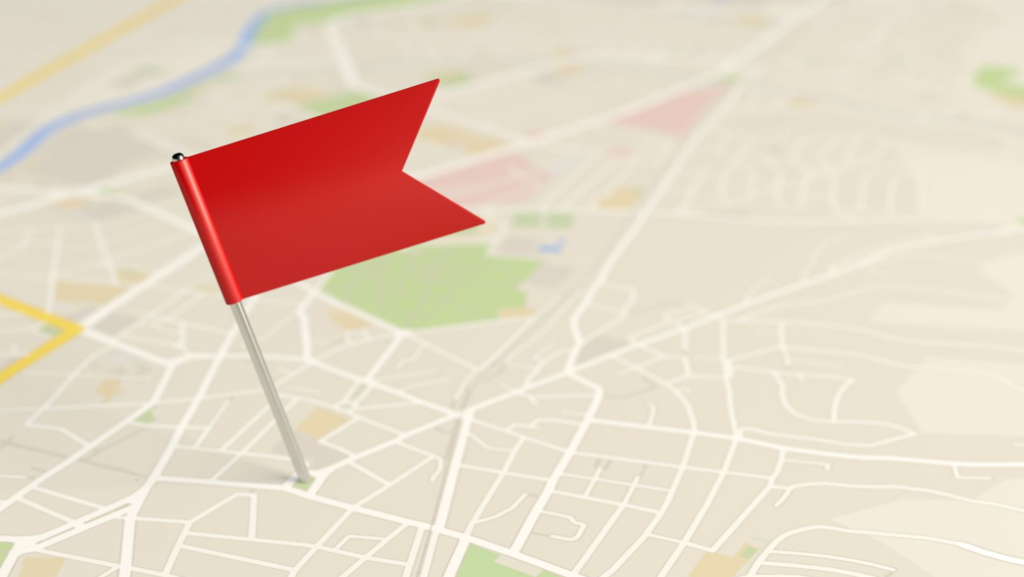
Since April, there's been a significant rise in U.S. customs inspections. Canadian customs have also ramped up their inspection frequency and intensity. Additionally, on the 22nd, Mexico announced a two-year temporary tariff on 544 imported goods.
Sellers exporting to the U.S. via Canada and Mexico will face challenges due to these changes.
Shipments should not be misleading with incorrect product names
Come April 1st, the U.S. Customs and Border Protection (CBP) rolled out a notice amplifying the inspection of indistinct and broad product names within MBL and HBL.
Should any issues arise, the U.S. Customs and Border Protection (CBP) will review the compliance of the cargo information and take necessary corrective actions. If any non-compliance is discovered, further actions may be taken.
Evergreen has disseminated a customer advisory acknowledging receipt of a notice from U.S. Customs. As per the 2002 Trade Act, all descriptions of reserved goods must be accurate and detailed. Thus, unclear product descriptions won't be accepted and could face a 'no-load' embargo from Customs under the 6H rule. Customers are implored to provide crisp and precise product descriptions while placing orders.
What situations trigger Code 6H?
Vague product names can easily lead to the AMS feedback code 6H (Do Not Load), indicating that the goods will not be allowed to ship. Only after the product name is amended to be compliant, contact Customs again, and obtain the 6I (Hold Removed) code, can the goods be shipped.
The Federal Regulations Compilation, Volume 19, Sections 4.7a, 122.48a, 123.91, 123.92, and 128.21 require:
- An accurate or specific description of the goods, regardless of their value.
- An accurate goods description is a clear and concise description of the items. The description should use plain and understandable language.
- Detailed enough to allow U.S. Customs to identify the size, shape, and features of the goods. Only the goods description should be included in the transmission column.
- Extraneous information unrelated to the goods description, such as Personal Identifying Information (PII), packaging type, carrier disclaimers, etc., should not appear in the goods description field.
Guidance on acceptable and unacceptable descriptions is available on CBT's website. This list is not exhaustive and will continue to expand as unacceptable descriptions are identified and acceptable descriptions are further refined. Descriptions in the acceptable column should only be used as examples of actual item descriptions and should not be used as a list of specific acceptable or restrictive terms.
Not only goods exported to the United States, but also goods to Canada and Mexico should pay attention to the issues of low declaration and vague declaration, to avoid goods being detained.

